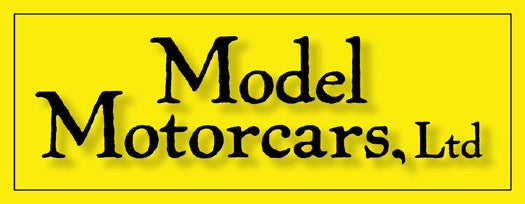The Rule of Threes
Share

The numerologist among us will all testify to the power of three (3), and the mathematicians will probably chime in with their support, but there is also a place for 3’s among us model guys. Perhaps not an obvious place, but a place nonetheless. Besides the usual power of seeing things in sets of three—wheels, carburetors, intake valves, and turbochargers—the number three can help us in construction, too.
This is not the usual admonition to avoid doing more than three tasks at one session atthe bench, or avoid drilling more than three holes at the drill press before checking thesettings. Stuff like that is obvious and, frankly, easy to ignore. Rather than that sort ofgeneralized advice, the Rule of Three is something that is essential to our success, andto ignore this rule is to risk certain disaster. In short, the Rule of Three is not only aGolden Rule, but it is the secret to a successful model.
In the photo attached, there is an engine that is under construction. We Pocher builders have all been there. Hard work has resulted in the basis of a jim-dandy model, but the model is not finished. Parts are missing. Things need to be added. The big challenge at this point is no longer getting the basics right, the big challenge is to turn this lump into something wonderful. Something that will make the model sing. Something that will make viewers swoon. Well, maybe not swoon, but at least say something nice. What to do, what to do.
At this point, some of us will inevitably decide to get side-tracked on another model project, or take on a massive landscaping project, or decide to raise the ceiling in the kitchen. The Rule of Three cannot save a project from such dangers, but knowing the Rule of Three may play a part in reducing the chances that such distractions will occur in the first place. The Rule of Three can help to reduce “endless details” to a manageable number.
The Tricky Bit is that the Rule of Three has already been applied to the model shown in the photo, and the rule is about to be applied to the process of completing the engine. The Rule of Three demands of the builder that he or she must identify the three most important details that define the model. In this case, the three most important details were identified as the front drive blower, the number of cylinders and the configuration of those cylinders. At the clean-sheet-of-paper stage, there was the demand for a massive engine based on the Mercedes straight-eight. Something different, and something gob-smacking. And something easy to build, which eliminates radial engines, steam engines, and various Flux Capacitors. Combining two stock Merc engines made good sense, and the choices were either a straight-sixteen or a V- configuration. A V shape made the most sense and became the #1 of our Rule of Three. The number of cylinders was crucial, and the number had to be obvious, even to a casual viewer. The #2 of our Rule of Three were the red ignition wires, and to underline the choice, two eight-cylinder distributors. The red wires underlined the number of cylinders and emphasized that this is no regular Pocher. The twin distributors made the red wires easy to count. The #3 element of our Rule of Three was the front drive supercharger which underlines the V configuration of the engine and extends its length. The fins and the intake tubes were a bonus.
With each successive subassembly—carburetors, water pump, generator, starter—the Rule of Three will be applied so that each sub-assembly becomes an independent model with three distinct details. For example, a generator must have a retaining strap, a regulator and a pulley. When a sub-assembly stubbornly refuses to provide three details, the color and texture of the body of the assembly itself can step in to save the day. A valve cover can be a boring thing, but adding not only a great texture but some dandy hold-down bolts and a nice i.d.plate with four rivets will make it a center piece.
The whole point of building models is to celebrate the joy of creating miniature homages to our physical world. The Rule of Three is a a way of extending that joy to the individual details that make up our models. More joy, more models, more accuracy. Win, win, win. And a way to overcome being overcome by endless details.
David Cox
